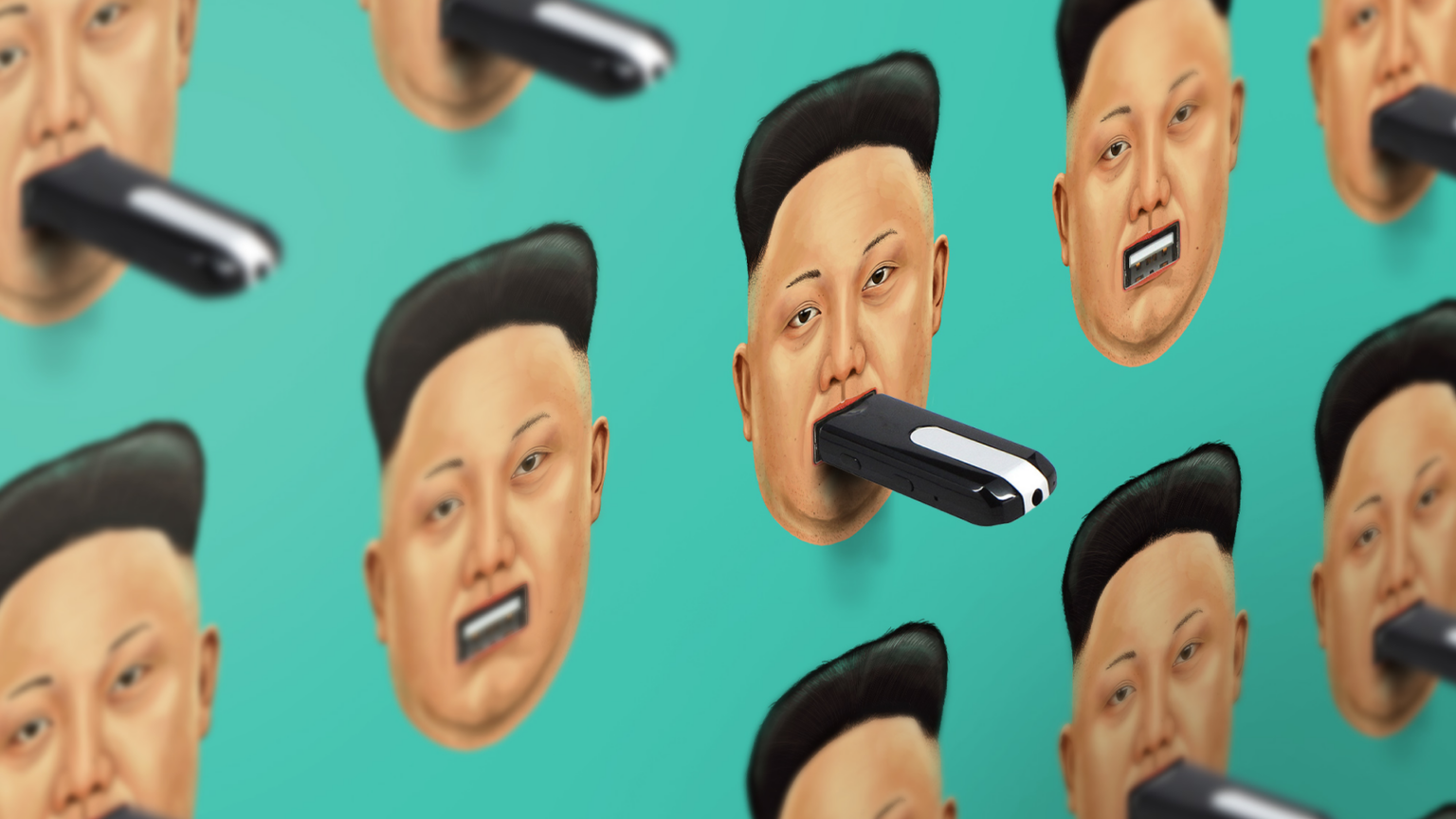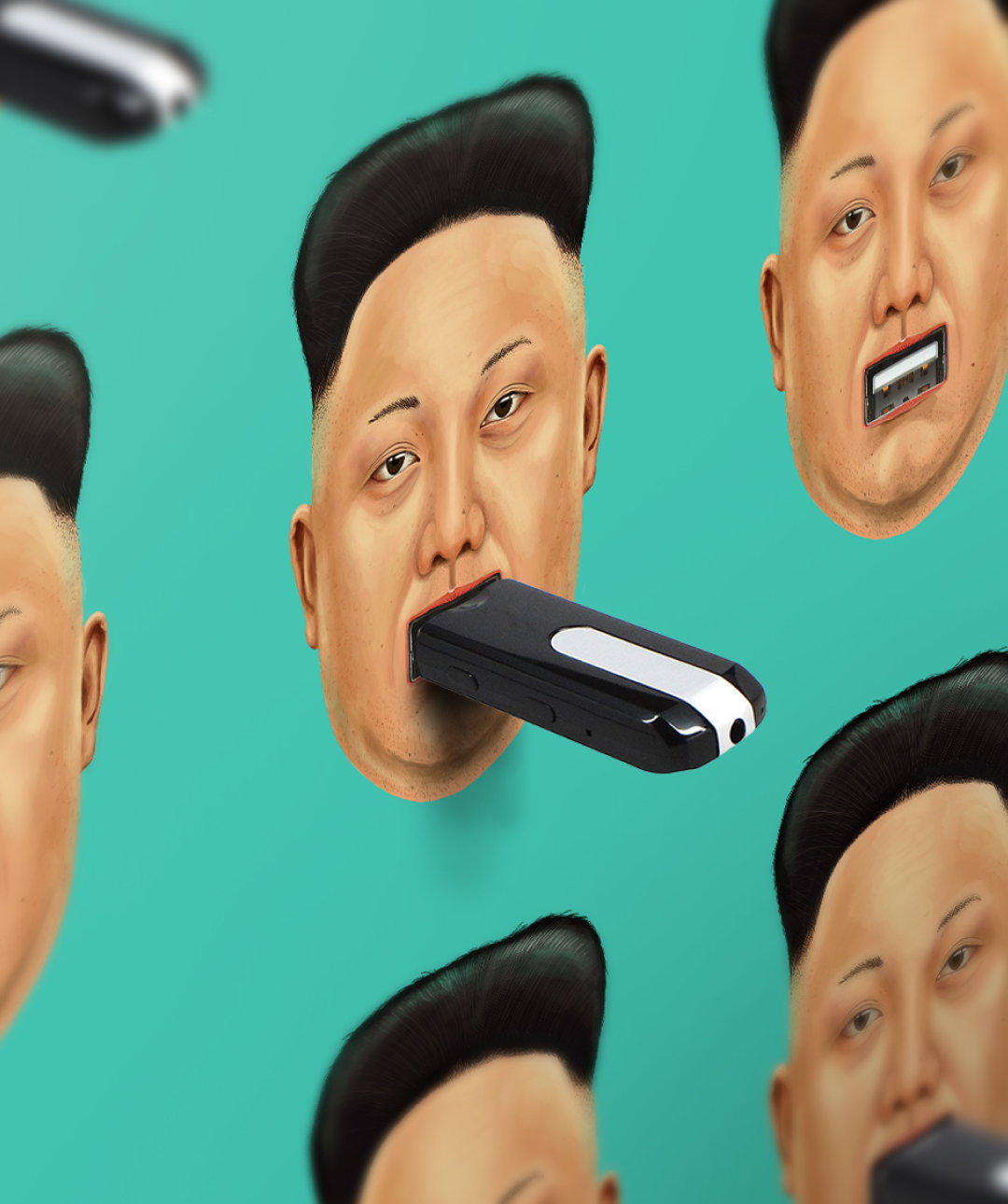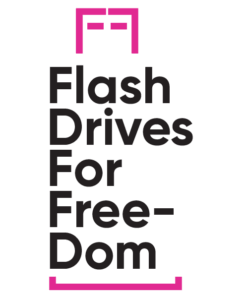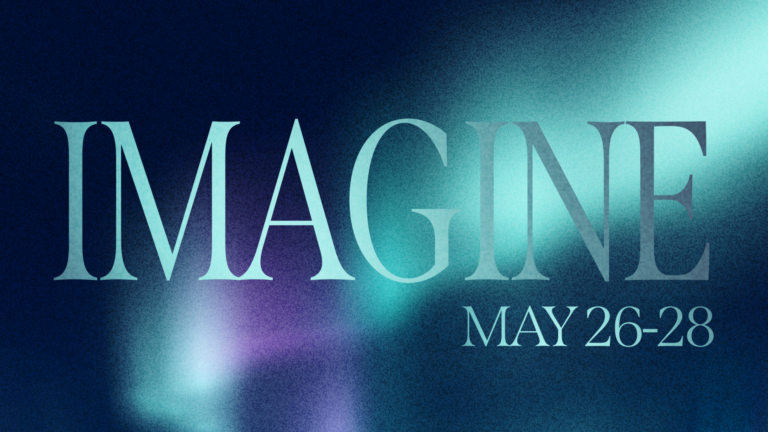Seongmin Lee: I grew up in a city called Hyesan, the capital of Ryanggang Province, North Korea. It’s a relatively modest-sized city by North Korean standards with about 200,000 city dwellers. If I were to pick two unique aspects about this area, the first would be the province’s oversized presence in North Korean propaganda due to Paektu Mountain being located there. As the propaganda goes, supposedly under any random pebble there, one may find traces of blood and the footprints of its revolutionary partisans, who were of course led by Kim Il Sung, the country’s founder and first dictator. Purportedly, the birthplace of Kim Jung Il, the second dictator, is also located here.
Another noteworthy aspect is my hometown’s proximity to China. Hyesan City is separated from China by just a narrow part of the Yalu River. It has thus long served as a hub of imported and exported goods from and to China, a facilitator of outside information to other parts of my home country, and an important route for many North Koreans seeking to defect. Because of this, my hometown has often drawn the attention of the regime, with its citizens subject to intense scrutiny and especially harsh consequences for noncompliance. Yet we are also known for pushing back and having an unrelenting (some might even say stubborn!) spirit.
2.What was life like in North Korea?
In the context of where I lived, I thought of my life as fairly normal: I had the same anti-American, Kim mythology-centric education, mixed in with the regular subjects, as the others chool kids I knew had. When I was about 12, I had something of an epiphany when my family moved to a place even closer to the border with China. When the sun went down, the bright street lights and neon lamps across the border in Changbai dazzled in conspicuous contrast to the darkness that enshrouded me on all sides. You didn’t need a guide to tell you which country you were in, and it all made me start to wonder how this so-called “socialist paradise” couldn’t even produce enough electricity to keep a single street light flickering.
But I still tried my hardest to work both within the system and beyond it when I thought no one was looking. Until I left North Korea in late 2009, I engaged in extensive cross-border activities for many years, often in collaboration with local border guards who became my covert business partners when they saw I could reliably get them various supplies they were always running short of. Over time, and after a lot of trial and error that included my arrests and terms of detention when caught, we built and grew a successful underground business network. We supplied local markets with everything from motorcycles to car engines to puppies – whatever was in demand in North Korea.
3.When did you leave North Korea? Why?
I left North Korea in late 2009 when I was 23. At the time, the scale of my work and business was growing, but so too was the frequency of authorities’ apprehension of my underground activities. The rewards and risks were escalating, and I didn’t know whether it would continue to be ultimately worth it.
Another decisive factor in my defection had to do with my family’s situation. I have one older sister who had left North Korea when she was young and could never return back due to the severity of punishment for such unauthorized departures. So for over ten years, my family was ripped in half with my mother and I on one side and my sister on the other. The only way for our family to securely reunite was for all of us to come to South Korea. And we did, arriving in early 2010.
4.What is the biggest culture shock from living in an authoritarian country, like North Korea, to now living in a democratic country, South Korea?
There have been a lot of them, but a few that come to mind were, of course, the prevalence of bright electric lights, the availability of hot water in each home, consumer fever and the ability to switch out old tech for newer models at the instance of their release, and roads full of cars and even the concept of a traffic jam – just to name a few. Other jarring moments have included seeing picketing and protesting citizens loudly criticizing a sitting president in public squares. And miraculously, a still-functioning society in the aftermath of apparent chaos. After each instant I witnessed, life seemed to return to normal and it was business as usual until the next episode.
Another memory I have is of my mom and I going to an ATM to withdraw cash. Here in South Korea, many ATMs are equipped with an automated voice system that says things like, “Thank you for your transaction. Our bank will do its best to provide its customers with the best services.” On the way home, my mom whispered to me, “Seongmin, the person behind the machine must be really tired having to say the same message all day long to each person while sitting in such a small box.”
5.In a previous interview, you mentioned that you secretly watched South Korean television programs. How would a program like Flash Drives for Freedom help and impact the lives of the North Korean people?
I think thumb drives can be a more powerful weapon for freedom than artillery and bombs; the latter can only hurt a few while the former can sway the minds and hearts of thousands without any violence. When I was in North Korea, I secretly watched prohibited media content like South Korean dramas, movies, and documentaries, sometimes alone and other times with close friends and family.
In North Korea, Americans are portrayed as evil-doers and South Korea as a colonized place by the former where poor kids spending most of their time at dumping grounds in search of foods instead of studying at schools. When I was watching South Korean dramas like “Winter Sonata” and others, a further explanation was not needed as to how distorted the North Korean regime’s propaganda was. The visual messages I and others got from such content stuck with us. Characters that appeared were compelling and persuasive, as was their fashion and the advanced infrastructure, urban centers, and vehicles on the streets that appeared alongside them. DVD players were a common medium by which people secretly consumed dramas, movies, and the like, even with the knowledge that the authorities were always on the prowl, cutting off the power to an entire residential block without any notice if anyone was caught watching illegal DVD content, for example. To avoid this situation, I bought a back-up power battery for my DVD player in case of an artificial power cut.
By my own experience and those of others, I firmly believe that access to unfettered information inside North Korea is a necessary step toward liberating North Korean citizens from the grip of the regime and helping them become more critical consumers of information all around, as well as helping them take matters into their own hands for their future. At a micro level, some residents are also known to apply information they learn from such content to their daily lives. For instance, one resident who used to sell gold to a Chinese merchant at the asked price quickly learned that he was actually selling it for much cheaper than the prevailing price after watching content presenting the then-current international gold market price.
To facilitate change on the ground in North Korea, flash drives carrying some creative content concerning the world outside, how the world views North Korea, as well as some practical information relevant to their lives can and should be made available to North Koreans in far greater numbers. Because of their compact size compared to DVDs, flash drives have also proven to be much easier to smuggle in across the border and hide from authorities’ surprise inspections.
6.What other information, besides television programs, do you believe is helpful for others inside North Korea to receive and know about?
As a general rule, any information from the outside world could be useful to North Koreans given their heavily restricted information environment. That said, content that gets sent to North Koreans can also be packaged depending on its intended target audience. For instance, some economic elites tend to show more interest in information related to world economic and financial markets such as dollar and yuan exchange rates and their prospects, scholars may naturally be more inclined towards content related to academic journals, comparison studies, and historical materials, whereas younger generations are more likely to find educational content such as learning English and Chinese and obtaining entertainment programs, such as video games, more desirable. Civil society organizations and activists working on the front lines of sending information content to North Korea can and should factor in such varying tastes when selecting and curating information content for the targeted audience or demographic group.
7.How can the international community and general public help the North Korean people?
There are several ways for the international community and those interested in helping the North Korean people to get involved. Many South Korean as well as U.S.-based organizations are hard at work on a range of North Korea-related issues and matters that concern present and former residents. Some of them such as PSCORE and Woorion are helping North Korean defectors resettle in their respective communities, while others are more focused on providing educational opportunities for young North Korean defectors by offering them English training opportunities and other subject-specific training. If one is interested in rescuing North Korean defectors from third countries such as China, Laos, and Thailand, there are also ways to get involved on that front through organizations such as LiNK. Those who have technical expertise and want to get involved can also reach out to organizations such as Lumen and NetFreedom Pioneers, which develop devices that could help North Koreans consume external content more safely. For those wanting to help organizations that send information to North Korea, organizations such as North Korean Strategy Center, NoChain, and Unification Media Group (UMG) offer other great means to get involved.
Raising the public awareness of the issue through social media platforms and leveraging one’s connections to those in decision-making positions in communities and governments to create environments conducive to such civil society organizations’ activities and thereby exerting pressure on the North Korean regime are also crucial ways to help the North Korean people.
8.Why are you passionate about advancing North Korean human rights?
Human rights are universal and inalienable. They are not and should not be something that can be given or taken away by anyone. The Preamble of the Universal Declaration of Human Rights starts with “…recognition of the inherent divinity and of the equal and inviolable rights of all members of the human family is the foundation of freedom, justice, and peace in the world.”
For too long, North Koreans have been denied of these basic rights, and unless we take action, that will indelibly continue. If those of us who lived there and are now privileged to have this freedom take no interest in advancing North Korean human rights, why should anyone else?
9.What is the one thing you hope to accomplish in regards to advancing human rights in North Korea?
In the long term, I want to see a North Korean society where its citizens are able to take matters in their hand concerning their future by electing leaders whom North Koreans regard as their representatives and being able to come to the United States and elsewhere to travel and study like their counterparts in the South.
In the short-to-medium term, it is my dream for those who are physically separated from their loved ones like my mom to be able to visit their loved ones in the country freely before it is too late. Changes like this won’t be that easy, but with our collective wisdom, commitment, and prayer, we can pave the way.
10.What are you most excited about regarding working at HRF?
The tools and platforms that HRF provides in protecting and advancing human rights is unparalleled. With access to an extensive repertoire of my colleagues’ experiences and expertise and those of professionals in our present and future network, I greatly anticipate learning from and working with HRF to advance North Korean human rights in a more meaningful and strategic way.









